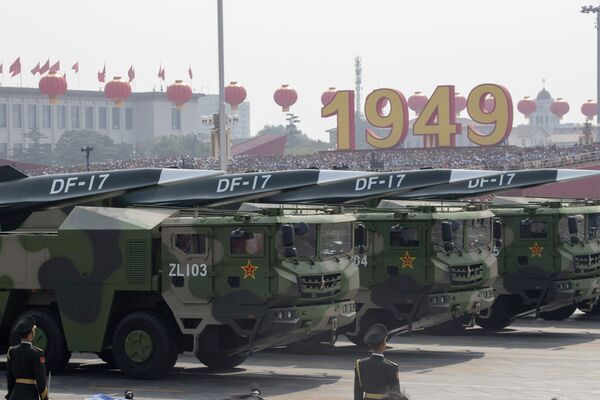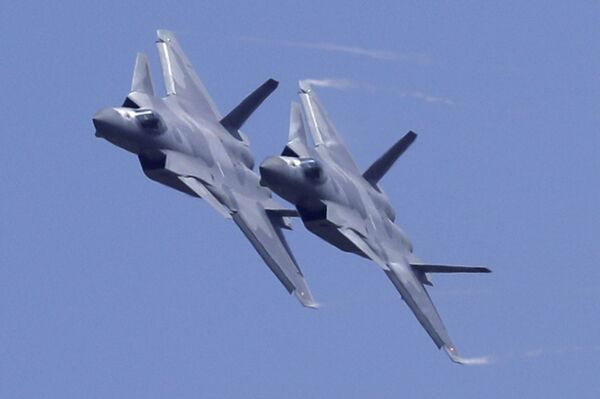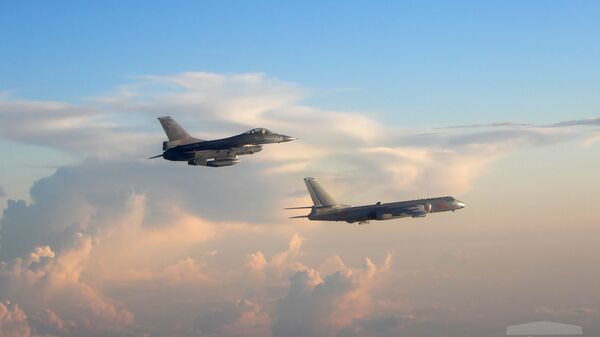On the morning of October 18, the Hong Kong-based South China Morning Post (SCMP) published an alarmist report about China “beefing” up its forces in Guangdong, especially with a rumored deployment of DF-17 hypersonic missiles to the region.
Andrei Chang, editor-in-chief of the Canada-based Kanwa Defense Review, told the SCMP the steady expansion of People’s Liberation Army (PLA) missile bases near Taiwan showed the PLA was “stepping up preparations for a war targeting Taiwan.”
Retired PLA Maj. Gen. Wang Zaixi, former deputy director of the Association for Relations Across the Taiwan Straits of the State Council, was reported by SCMP as telling Chinese news site Guancha.cn that live-fire exercises over the weekend were “unprecedented” and “showed it [the PLA] is just one step away to actual combat.”

Chang warned of the deployment of other forces to the region, such as the Russian-made S-400 Triumf air defense system, noting both the S-400 and DF-17 could strike targets across all of Taiwan, a capability that has until now eluded the PLA.
However, by the afternoon, some cooler heads began to prevail, and the SCMP published another piece saying the opposite: that a war was not imminent and the deployments were a quantitative change in the situation, not a qualitative one.
One expert, Rand think tank senior analyst Derek Grossman, seemed to suggest Beijing was pursuing a similar policy to that used by Egypt in the months prior to the outbreak of the 1973 Arab-Israeli War.
“From Beijing’s perspective, it is quite beneficial to create a new normal of intruding into Taiwan’s airspace – and as such this is very likely to ramp up – because it reduces Taiwan’s ability to determine whether specific actions represent the start of a real war,” Grossman told the SCMP.
“The ramp-up in Chinese military activity is also designed to frighten Taiwan into submission and to gather intelligence, such as on response times of Taiwanese jet fighters scrambled to intercept Chinese military aircraft,” he added, noting that this enhanced Chinese readiness by putting soldiers in “real combat conditions.”

In the six months before the October 6, 1973, sneak attack that overwhelmed Israeli forces in the Sinai, the Egyptian military regularly mobilized its forces near the Suez Canal and challenged the Israeli Bar Lev defensive line. When these turned out to be mere drills, the Israel Defense Forces stopped taking them seriously, so when the real attack came, they were caught almost completely flat-footed, having concluded the preparations were yet another drill.
Timothy Heath, another senior Rand analyst, told the SCMP that the buildup was more about intimidation. “Although Beijing might be willing to have a military crisis, that is quite separate from a willingness to risk a major war,” he said.
The evening of October 18 also saw a reply to the SCMP’s claims by the Global Times, a publication owned by the People’s Daily, the official outlet of the Communist Party of China. The Times dismissed every single one of the SCMP’s conclusions, noting that it was not even possible for them to know where the DF-17 had been deployed, since “the DF-17s are highly mobile and information about their deployments is not available to the general public.”
“The PLA Rocket Force's older generation missiles are already sufficient to wipe out most of Taiwan's key military installations, and the island is not capable of intercepting them, so it is not necessary to use the DF-17 against the island's military, Chinese mainland experts said, noting that the DF-17 will play a more significant role in stopping forces from the US, Japan, South Korea, Australia and other locations, should they attempt to militarily interfere in China's internal affairs,” the Global Times noted.

Washington has staged several major provocations over Taiwan in recent months, including the August visit to the island by US Secretary of Health and Human Services Alex Azar, the highest-ranking US official to visit the island since Washington switched recognition of the Chinese government from Taipei to Beijing in 1979. The US has also signed record-high sales of military weapons to Taiwan, including F-16V “Viper” interceptor jets and anti-ship torpedoes.
Beijing regards Taiwan as a rebellious province and part of its territory, meaning US aid to the government in Taipei is interference in China’s internal affairs. The Republic of China, as Taiwan is formally called, is the last surviving remnant of the government that once ruled all of China, but was defeated by the communist Red Army in 1949, when the People’s Republic was founded in Beijing.


